The Latest from Boing Boing |  |
- Haircleaning for hydrophobic men (with mermaids!)
- Fukushima: What's the worst that could happen? Nuclear experts explain.
- Japan quake seismic wave data, "sonified" (audio)
- Japan Quake and Tsunami: before and after satellite photos, from Google
- Japan: Fukushima operator built nuclear plants to withstand only up to 7.9 quake
- Japan: "Why do we need nuclear power?"
- Japan: New meltdown fears at second reactor; how much radiation has been released in Fukushima crisis?
- Ushahidi for the Japan earthquake, tsunami, and nuclear emergency
- Al Jazeera cameraman killed in Libya, in government ambush of news crew
- Websites collect clueless, racist internet comments made about Japan, post-quake
- Japan quake zone: before/after video
- Jeff and Ann VanderMeer at SF in SF on Monday
- Nuclear energy 101: Inside the "black box" of power plants
- Live, real-time English audio translation of Japan TV streams
- Stephen King has a new "Dark Tower" book coming in 2012
- Japan: Explosion at Fukushima nuclear plant (video)
- America fields "Son of ACTA" -- a new, sinister, secret copyright treaty
- Sphere of tentacles
- Jazz-age villains of Australia
| Haircleaning for hydrophobic men (with mermaids!) Posted: 13 Mar 2011 12:12 AM PST  This ad for "non-greasy Groom & Clean," a product that allows men to "groom" their hair by putting "hairdressing" in it and combing it through with water raises a fairly obvious question: "Why don't you just wash your hair?" |
| Fukushima: What's the worst that could happen? Nuclear experts explain. Posted: 12 Mar 2011 09:52 PM PST 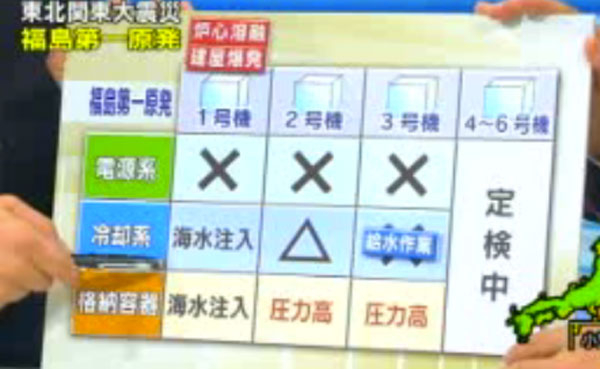 "The probability of this occurring is hard to calculate primarily because of the possibility of what are called common-cause accidents, where the loss of offsite power and of onsite power are caused by the same thing. In this case, it was the earthquake and tsunami. So we're in uncharted territory, we're in a land where probability says we shouldn't be. And we're hoping that all of the barriers to release of radioactivity will not fail." —Physicist Ken Bergeron, who has performed research on nuclear reactor accident simulation at Sandia National Laboratory in New Mexico, in Scientific American. (image: on-air explanation of the current status of reactors at Fukushima plants 1 and 2, on NHK TV Japan, via Joi) |
| Japan quake seismic wave data, "sonified" (audio) Posted: 12 Mar 2011 09:46 PM PST 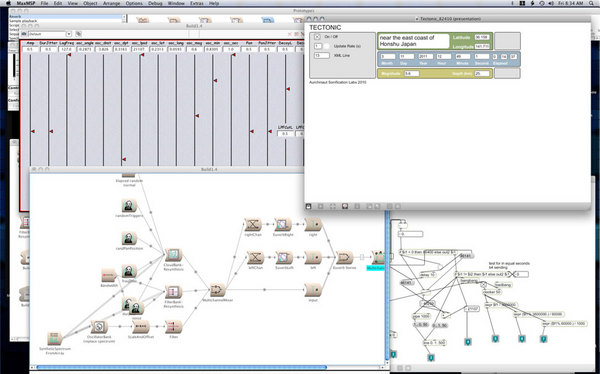 Sonification of the great Japan earthquake , by Micah Frank. Tectonic is a realtime seismic analysis and sound synthesis system. Sound is created in realtime by earthquakes as they occur across the globe. A tightly integrated system between Max/MSP, Google Earth and Symbolic Sound's Kyma processes earthquake data that is translated into sound synthesis parameters. A USGS XML feed is parsed into numerous fields including magnitude, elevation, time of day and geographical coordinates. These data are mapped to synthetic spectrums and processed by granular, aggregate and subtractive synthesis.Earthquakes off the east coast of Honshu, Japan - Friday March 11, 2011 by Micah Frank (BB Submitterator, hanks, Speedo) |
| Japan Quake and Tsunami: before and after satellite photos, from Google Posted: 12 Mar 2011 08:06 PM PST |
| Japan: Fukushima operator built nuclear plants to withstand only up to 7.9 quake Posted: 12 Mar 2011 08:14 PM PST 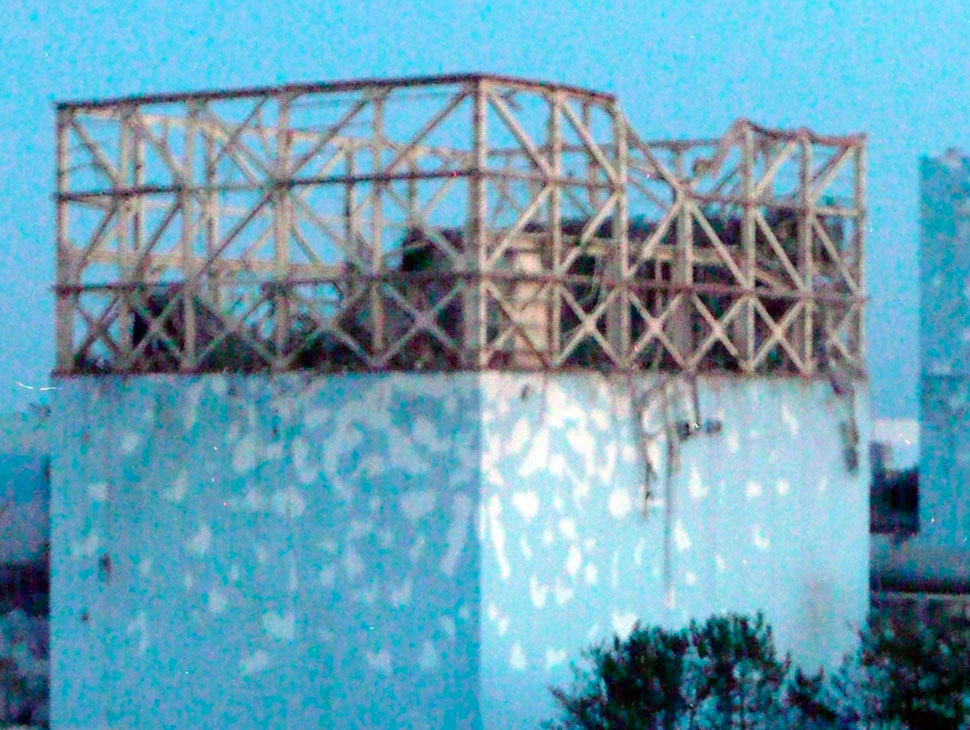 Documents from Tokyo Electric, the operator of the Japanese nuclear plants in crisis after Friday's devastating quake and tsunami, reveal that the company tested the Fukushima plant to withstand a quake up to magnitude 7.9. That threshold is well below the force of Friday's quake, recently upgraded to 9.0. Snip from Wall Street Journal: Tepco's last safety test of nuclear power plant Number 1--one that is currently in danger of meltdown--was done at a seismic magnitude the company considered the highest possible, but in fact turned out to be lower than Friday's quake. The information comes from the company's "Fukushima No. 1 and No. 2 Updated Safety Measures" documents written in Japanese in 2010 and 2009. The documents were reviewed by Dow Jones. The company said in the documents that 7.9 was the highest magnitude for which they tested the safety for their No. 1 and No. 2 nuclear power plants in Fukushima.Japan Tries Using Seawater to Cool Damaged Reactor (WSJ)
Photo (Reuters): The damaged roof of reactor number No. 1 at the Fukushima Daiichi nuclear plant after an explosion that blew off the upper part of the structure is seen in this handout photo released by Tokyo Electric Power Company (TEPCO) in Fukushima Prefecture, northeastern Japan, March 12, 2011. Japanese authorities battling to contain rising pressure in nuclear reactors damaged by a massive earthquake were forced to release radioactive steam two plants, after evacuating tens of thousands of residents from the area. Tokyo Electric Power Co also said fuel may have been damaged by falling water levels at the Daiichi facility, one of its two nuclear power plants in Fukushima, some 240 km (150 miles) north of Tokyo. Picture taken March 12, 2011. |
| Japan: "Why do we need nuclear power?" Posted: 12 Mar 2011 07:25 PM PST At Global Voices, Solana Larsen looks at conversations among Japanese citizens on Twitter. "Some urge against alarmist tweeting that could cause panic, and many more vent frustrations over safety risks." Among their concerns: the meta-connection between the unfolding Fukushima crisis and ever-increasing energy demands of big cities. Is smarter energy use part of what's needed to prevent nuclear disasters? (via @shioyama) |
| Posted: 12 Mar 2011 07:26 PM PST  A spokesperson for the Japanese government says authorities are presuming that "possible meltdowns are under way at two nuclear reactors" at this hour.
Chief Cabinet Secretary Yukio Edano told reporters there is a "possibility" of a meltdown at the plant's No. 1 reactor, adding, "It is inside the reactor. We can't see." He then added that authorities are also "assuming the possibility of a meltdown" at the facility's No. 3 reactor.A third reactor at the Fukushima #1 power plant in Japan has lost its emergency cooling functionality. Now, six total reactors have failed at two Fukushima nuclear power plants since the earthquake and tsunami hit.
Mainichi News reports that at least 15 people have been hospitalized for radiation exposure. At the time of this blog post, NHK television is reporting a slightly higher count: 133 evacuees have been tested for radiation exposure, 19 of them have confirmed contaminated. First responders are also distributing Iodine tablets to potentially affected populations. Japan's Kyodo news agency reports that radiation levels have risen above the legal safety limit around the No. 1 Fukushima plant, and the matter is now considered an "emergency situation." Asahi Shimbun reports that Japan's central government has declared a state of emergency at the No. 2 Fukushima nuclear power plant, which sits about 8 km south of the No. 1 Fukushima plant where the previous explosion occurred. A state of emergency had been declared for the No. 1 plant the previous day. Residents within 10 kilometers of the No. 1 plant were told to evacuate. Traces of radioactive cesium were confirmed around the plant in an inspection. But how much? And how far out does the risk of radioactive contamination reach? William Broad writes in the New York Times:
In just the past few hours, Tokyo Electric Power Company (TEPCO, the company that operates the nuclear plants in question) has started releasing air from a reactor container vessel at the plant's No.3 reactor. In this AP article, some possible next-step scenarios if these current efforts to cool down the reactors fail: If the reactor core became exposed to the external environment, officials would likely began pouring cement and sand over the entire facility, as was done at the 1986 Chernobyl nuclear accident in the Ukraine, Peter Bradford, a former commissioner of the U.S. Nuclear Regulatory Commission, said in a briefing for reporters.
|
| Ushahidi for the Japan earthquake, tsunami, and nuclear emergency Posted: 12 Mar 2011 05:58 PM PST |
| Al Jazeera cameraman killed in Libya, in government ambush of news crew Posted: 12 Mar 2011 07:54 PM PST  Al Jazeera has announced that one of its cameramen, Ali Hassan Al Jaber, was killed after a reporting team for the Arabic-language channel was ambushed by government forces near the town of Benghazi. The news sparked an outpouring of emotion and support for the network and the slain cameraman. Wadah Khanfar, the director general of the Al Jazeera Network, announced the death in broadcast remarks, saying "the network will not be silent after death of our cameraman" and would seek to prosecute the perpetrators. Read a longer account, with archives of tweets from people close to the story, here. |
| Websites collect clueless, racist internet comments made about Japan, post-quake Posted: 12 Mar 2011 04:37 PM PST Two websites launched this week, Karma Japan and Ignorant and Online, collect a wide assortment of terrible, insensitive, hateful things said by stupid people about Japan and her people after the earthquake. Mostly, this is thick-headed white people in America saying the disaster is "karma for Peal Harbor." Feeding the trolls? Perhaps, but it's still an interesting sociological snapshot. (via Sean Bonner) |
| Japan quake zone: before/after video Posted: 12 Mar 2011 04:33 PM PST Here is a video clip from the Japanese television network NHK showing before and after video of areas in the earthquake zone. The scale of the devastation is overwhelming. (via CNN, thanks @CalgaryGuru) |
| Jeff and Ann VanderMeer at SF in SF on Monday Posted: 11 Mar 2011 11:53 PM PST Monday night's installment of the excellent SF in SF reading series features Jeff and Ann VanderMeer: "Jeff and Ann will be reading, and speaking about their current projects, past projects, and what it's like to be each one-half of a respected, admired, and talented artistic couple." It's free! (Thanks, Rina!) |
| Nuclear energy 101: Inside the "black box" of power plants Posted: 12 Mar 2011 03:53 PM PST  This morning, I got an email from a BoingBoing reader, who is one of the many people worried about the damaged nuclear reactors at Fukushima, Japan. In one sentence, he managed to get right to heart of a big problem lurking behind the headlines today: "The extent of my knowledge on nuclear power plants is pretty much limited to what I've seen on The Simpsons". For the vast majority of people, nuclear power is a black box technology. Radioactive stuff goes in. Electricity (and nuclear waste) comes out. Somewhere in there, we're aware that explosions and meltdowns can happen. Ninety-nine percent of the time, that set of information is enough to get by on. But, then, an emergency like this happens and, suddenly, keeping up-to-date on the news feels like you've walked in on the middle of a movie. Nobody pauses to catch you up on all the stuff you missed. As I write this, it's still not clear how bad, or how big, the problems at the Fukushima Daiichi power plant will be. I don't know enough to speculate on that. I'm not sure anyone does. But I can give you a clearer picture of what's inside the black box. That way, whatever happens at Fukushima, you'll understand why it's happening, and what it means. At a basic level, nuclear energy isn't all that different from fossil fuel energy. The process of generating electricity at a nuclear power plant is really all about making heat, just as it is at a coal-fired plant. Heat turns water to steam, steam moves turbines in the electric generator. The only difference is where the heat comes from--to get it, you can light coal on fire, or you can create a controlled nuclear fission reaction. A fission reaction is a lot like a table filled with Jenga games, each stack of blocks standing close to another stack. Pull out the right block, and one Jenga stack will fall. As it does, it collapses into the surrounding stacks. As those stacks tumble, they crash into others. Nuclear fission works the same way--one unstable atom breaks apart, throwing off pieces of itself, which crash into nearby atoms and cause those to break apart, too. Every time one of those atoms breaks apart, it releases a little heat. Multiply by millions of atoms, and you have enough heat to turn water into steam*. In a Boiling Water Reactor, like the ones at Fukushima, water is pumped through the core—the central point where the actual fission reactions happen. Along the way, fission-produced heat boils the water, and the steam rises up and is captured to do the work of turning turbines. In the Core The core is the part that really matters today. In the core of a nuclear reactor, you'll find fuel rods—tubes filled with elements whose atoms are unstable and prone to breaking apart and starting the Jenga-style chain reaction. Usually, the elements used are Uranium-238 or Uranium-235. They're refined and processed into little black pellets, about the size of your thumbnail, which are poured by the thousands, into long metal tubes. Bunches of tubes--each taller than a basketball player--are grouped together into square frames. These tall, skinny columns are the fuel assemblies. The fission reactions that happen are all about proximity. In a fuel rod, lots of uranium atoms can crash into each other as they break apart. Pack the fuel rod into an assembly, and lots more atoms can affect one another—which means the reactions can release more energy. Put several fuel assemblies into the core of a nuclear reactor, and the amount of energy released gets even higher. Proximity is also what makes the difference between a nuclear bomb, and the controlled fission reaction in a power plant. In the bomb, the reactions happen—and the energy is released—very quickly. In the power plant, that process is slowed down by control rods. These work like putting a piece of cardboard between two Jenga towers. The first tower falls, but it hits a barrier instead of the next tower. Of all the atoms that could be split, only a few are allowed to actually do it. And, instead of an explosion, you end up with a manageable amount of heat energy, which can be used to boil water. In Case of Emergency Now that you understand what's going on inside a nuclear reactor, you get a good idea of what happened at Fukushima. Like the other nuclear power plants in Japan, Fukushima Daiichi got a message from the country's earthquake warning system, and shut down in advance of the quake. Basically, that means that control rods—"big metal gizmos", as Charles Forsberg, executive director of the MIT Nuclear Fuel Cycle Project, described them to me—were inserted into the fuel assemblies, cutting the fuel rods off from one another. But, because you aren't completely separating all the uranium atoms from one another, shutting down the core isn't the same thing as flipping an "off" switch. When a reactor core is shut down, its energy output drops not to zero, but about 6% of its normal output, Forsberg told me. The reactions grind to a halt over the next few days, as the falling Jenga towers run out of other towers they can actually hit. In the meantime, atoms keep breaking apart, releasing both heat and fast-moving particles that can penetrate human skin and damage our cells. Because of this, every nuclear reactor has ways of getting rid of the heat, and blocking those fast-moving radioactive particles. When the reactor at Fukushima shut down, it should have been kept cool by water pumped through the core. But, because the tsunami damaged the diesel-powered generators that pumped the water, the core kept heating up. If that sounds like a design flaw, you're right. The Fukushima reactors were built in the early 1970s. In modern nuclear reactor designs, pumps aren't necessary to move water through the core in an emergency shut down. Instead, the water moves via gravity. But, in this case, no pumps meant no water movement. So the core got hotter, which boiled off some of the water. The boiling caused pressure in the core to increase. To protect the core, and prevent a bigger problem, authorities had to vent some of that steam into the atmosphere, which means venting some of the radioactive particles along with them. This is also probably tied into the explosion that happened, according to MIT's Charles Forsberg.
The good news is that the explosion seems to have happened outside the core. In that case, it's completely reasonable that an explosion could happen without releasing lots of radioactive material. That's because nuclear power plants come in layers, like an onion. The core is contained within a building that has solid concrete walls, 3-to-6 feet thick. It's meant to withstand collision with an airplane. It's also meant to withstand an explosion from inside. But that bunker sits inside something a lot flimsier—a building more akin to a metal shed. It's the shed that exploded today at Fukushima. Because radiation levels didn't rise after the explosion, we can be pretty certain that the bunker is still intact. How To Win This This is a serious emergency, but there are some good reasons to be hopeful. According to World Nuclear News and Reuters, there were seven reactors in Fukushima that were affected by the earthquake. Of those, four have access to outside power to run their water pumps and are stable. Three lost their power. Out of those three, one has steady levels of water. Only two have decreasing water levels. But, in recent hours, workers have started pumping in seawater to one of those. Hopefully, both can be stabilized. But it's hard to say right now. And then what happens? Remember, this is really just an emergency shutdown gone awry. The control rods are still in place. The Jenga columns are still separated. So, over time, the fission reactions will still slow down and stop. As they do, heat levels will drop, and so will levels of radiation. Really, what we have here is a waiting game. The goal is to keep the reactors stabilized long enough that the shutdown can completely shut down. For more information—and details I might have missed—I recommend checking out a recent BBC article, and an interview Skepchick blogger Evelyn did with her father, a nuclear engineer. *If you want to understand thy physics of nuclear energy in more detail, I'd recommend reading Marcus Chown's The Matchbox That Ate a 40 Ton Truck Image: Japan Ministry of Land, Infrastructure and Transport. AirPhoto |
| Live, real-time English audio translation of Japan TV streams Posted: 12 Mar 2011 11:19 AM PST YokosoNews has been offering live, real-time English translation of NHK other Japanese-language networks on his Ustream channel. I'm listening to him as I watch NHK TV on my cable provider (Time Warner, Comcast, and others are offering the normally "premium" Japanese television network for free right now, in the wake of the disaster.) |
| Stephen King has a new "Dark Tower" book coming in 2012 Posted: 11 Mar 2011 11:12 PM PST Stephen King has written another installment in the Dark Tower books, a long-running, seven-volume series that concluded (somewhat unsatisfactorily, I think) in 2004. The new book, The Wind Through the Keyhole, will fill in some of the action between the fourth and fifth books, and I'm pretty excited to learn that it's coming. Despite my misgivings about the series' conclusion, I really, really enjoyed these books and have returned to them more than once over the years. The Dark Tower: The Wind Through the Keyhole (Image: Michael Whelan/Wikipedia) |
| Japan: Explosion at Fukushima nuclear plant (video) Posted: 12 Mar 2011 10:06 AM PST 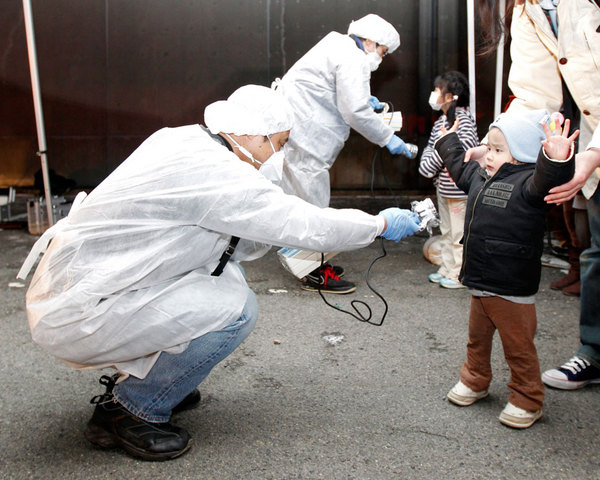 Photos: Officials in protective gear check for signs of radiation on children who are from the evacuation area near the Fukushima Daini nuclear plant in Koriyama, March 13, 2011. Japanese Chief Cabinet Secretary Yukio Edano confirmed on Saturday there has been an explosion and radiation leakage at Tokyo Electric Power Co's (TEPCO) Fukushima Daiichi nuclear power plant. The biggest earthquake to hit Japan on record struck the northeast coast on Friday, triggering a 10-meter (33-foot) high tsunami that swept away everything in its path, including houses, ships, cars and farm buildings on fire. (REUTERS/Kim Kyung-Hoon)
The videos above (one from Japanese TV, one from the Russian network RT) show a plume of smoke emerging from the damaged reactor at Fukushima Daichi Nuclear Power Station in Japan on Saturday: an explosion blew the roof off of a building and destroyed the outer walls of a reactor. Officials have expanded the evacuation radius around the plant to a 12 mile radius, and are distributing iodine to populations nearby, to help offset possible radiation poisoning. Below, a shot from NHK TV of the damaged building (thanks, Yamara, via BB Flickr Pool).
New York Times article by Matthew Wald and Michael Wines: Officials said late Saturday that leaks of radioactive material from the plant, which began before the explosion, were receding and that a major meltdown was not imminent. But severe problems at two nuclear plants close to the epicenter of the quake forced evacuations of tens of thousands of people from surrounding areas, hampering efforts to search for survivors and forcing Japan's leadership to grapple with two major crises as the same time.The NYT's Lede blog has been updating, and there's a Reuters live blog here. CNN item, and AP item via NPR. Early reports are that radiation levels receded after the explosion, and that a worse disaster may have been averted. Still, the incident is being described as the most significant nuclear disaster since Three Mile Island or Chernobyl, in global impact. The Fukushima disaster now has its own Wikipedia page.
|
| America fields "Son of ACTA" -- a new, sinister, secret copyright treaty Posted: 11 Mar 2011 11:05 PM PST Knowledge Ecology International has published a leaked draft of the Trans-Pacific Partnership Agreement, the latest secret, US-led treaty, this one targeting countries on the Pacific rim. The IP chapter of the agreement contains all the material that the US was forced to drop from ACTA, the last secret copyright treaty the States tried to sneak into the world. As with ACTA, the game plan for TPP will be to get a bunch of rich, powerful countries to sign on, and then use this as a benchmark for all treaties between those nations and the rest of the world. Here's some of Michael Geist's analysis: The U.S. plan is everything it wanted in ACTA but didn't get. For example, the digital lock rules are the U.S. DMCA, complete with exact same exceptions (no more, no less). The term of copyright matches the U.S. term of life of the author plus 70 years, beyond the Berne requirement and Canadian law. The ISP provisions including a copy of the U.S. notice-and-takedown system as well as provisions that go beyond U.S. law. In other words, the U.S. envisions using the TPP to export its copyright law to as many countries as possible while creating backdoor changes to its own domestic laws. Moreover, the chapter extends well beyond copyright, with patent provisions that would restrict countries' ability to restrict patentable subject matter.The complete Feb 10, 2011 text of the US proposal for the TPP IPR chapter
|
| Posted: 11 Mar 2011 10:59 PM PST  "Octopussy" is just one of several splendid spheroid sculptures from artist Nir Adhar. It's full of tentatcly goodness! "Octopussy" is just one of several splendid spheroid sculptures from artist Nir Adhar. It's full of tentatcly goodness!
|
| Jazz-age villains of Australia Posted: 12 Mar 2011 08:25 AM PST  Here's a collection of photos from Sydney, Australia's Justice & Police Museum exhibition Crooks. These pictures were taken by Australian police in the 1920s, capturing "individuals they thought were, or were likely to become, professional criminals." They're collected in a high-quality photography book called Crooks Like Us, which non-Australians can also get a pretty good deal on at Amazon. The photos themselves are striking and their subjects run the gamut from properly scary villains to haunted and troubled souls. |
| You are subscribed to email updates from Boing Boing To stop receiving these emails, you may unsubscribe now. | Email delivery powered by Google |
| Google Inc., 20 West Kinzie, Chicago IL USA 60610 | |

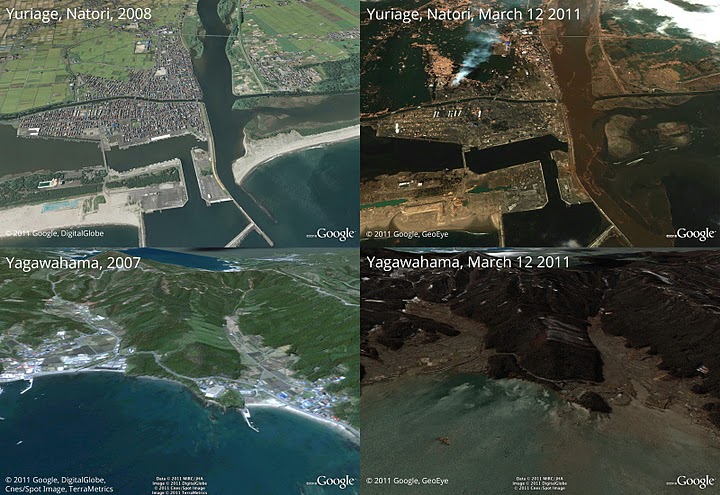

 At some point, while worrying over the copyedited manuscript of the next book (11/22/63, out November 8th), I started thinking--and dreaming--about Mid-World again. The major story of Roland and his ka-tet was told, but I realized there was at least one hole in the narrative progression: what happened to Roland, Jake, Eddie, Susannah, and Oy between the time they leave the Emerald City (the end of Wizard and Glass) and the time we pick them up again, on the outskirts of Calla Bryn Sturgis (the beginning of Wolves of the Calla)?
At some point, while worrying over the copyedited manuscript of the next book (11/22/63, out November 8th), I started thinking--and dreaming--about Mid-World again. The major story of Roland and his ka-tet was told, but I realized there was at least one hole in the narrative progression: what happened to Roland, Jake, Eddie, Susannah, and Oy between the time they leave the Emerald City (the end of Wizard and Glass) and the time we pick them up again, on the outskirts of Calla Bryn Sturgis (the beginning of Wolves of the Calla)? 
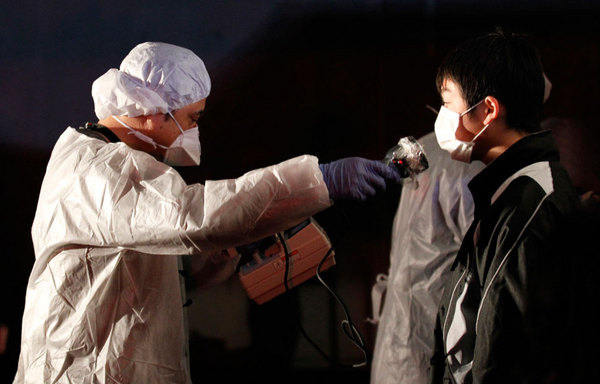
No comments:
Post a Comment